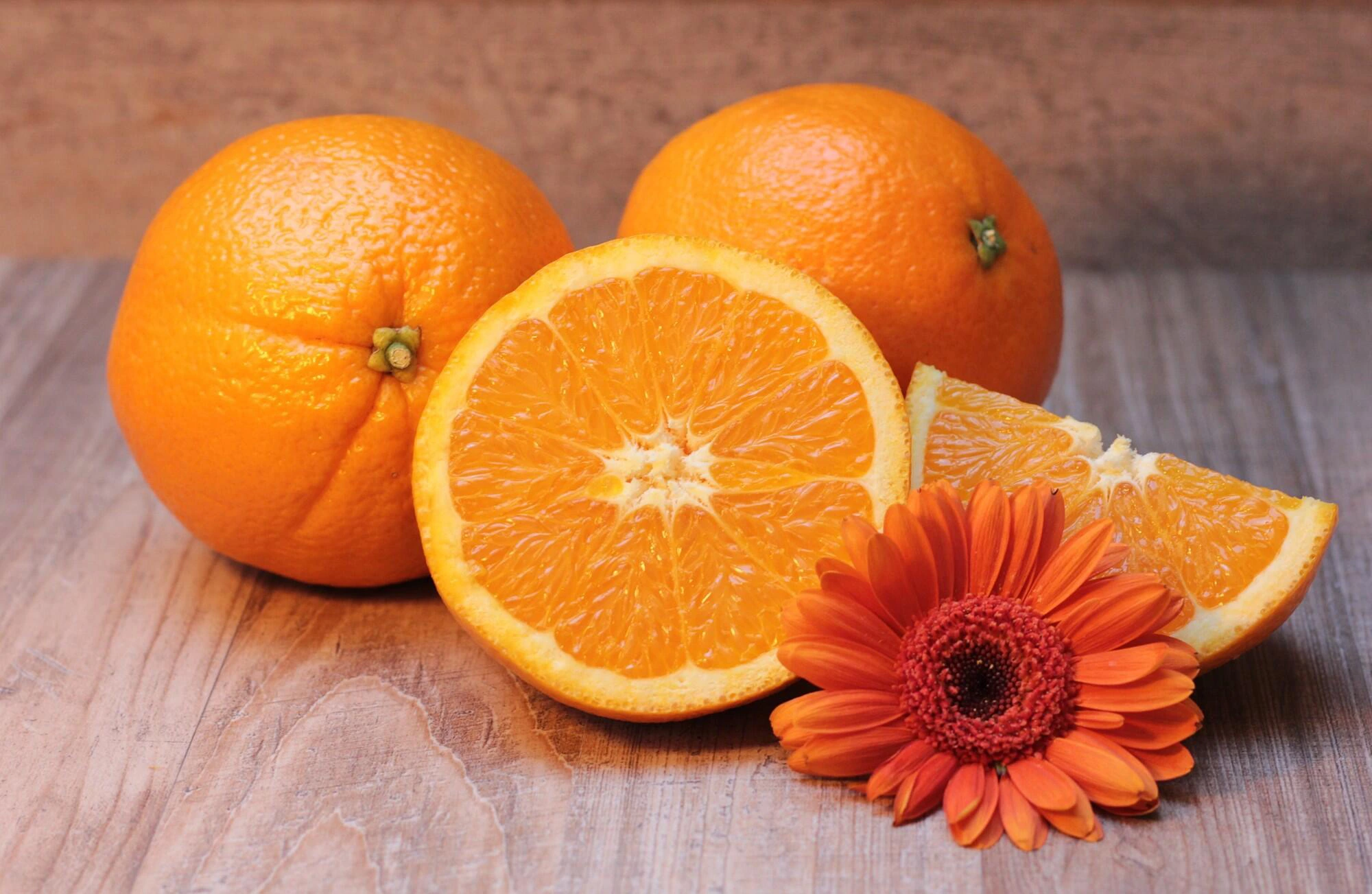Food & Drink
Exploring the Different Types of Wine Corks: From Natural to Synthetic

Table of Contents
Wine corks play an essential role in preserving the quality and flavor of wine. They serve as a seal for the bottle. They prevent air from entering and spoiling the wine.
But there is more to wine corks than just sealing bottles. With its many types, there is much more that you need to discover about corks.
In this section, we will delve deeper into the world of cork materials and uncover some interesting facts about each type. So read on and find out everything you need to know about corks.
Standard Natural Corks
Natural corks are made from the bark of cork oak trees, which can only be found in specific regions such as Portugal and Spain. These corks for wine bottles are the traditional type used for wine bottles and have been around for centuries.
Standard natural corks are usually composed of one solid piece of cork, with a distinctive mushroom-shaped top that is inserted into the bottle. They provide a tight seal for the wine, allowing it to age properly and develop its desired flavors.
Interestingly, natural corks are also environmentally friendly as the bark is harvested from cork oak trees without harming them. They can also be recycled and reused in other products after being extracted from wine bottles.
Colmated Corks
Colmated corks are a variation of natural corks, with an added layer of cork dust or granules on the top surface. This layer helps to fill in any imperfections in the cork and creates a smoother surface for insertion into the bottle.
While colmated corks provide a similar function as standard natural corks, they are not as durable and can sometimes break easily. They are also less expensive to produce and can be used for wines that are meant to be consumed within a shorter period.
Agglomerated Corks
Agglomerated corks are made from small pieces of natural cork that have been glued together. They are less expensive than natural corks and provide a good seal for wines that are meant to be consumed within a year or two.
One downside of using agglomerated corks is that they do not allow for as much oxygen exchange as natural corks, which can affect the wine aging process. They are also not as environmentally friendly, as they require more processing and cannot be recycled.
Champagne Corks
Champagne corks are a type of cork used specifically for sparkling wines. They are larger and denser than standard natural corks, allowing them to withstand the high pressure of champagne bottles.
These corks also have a wire cage around them, which helps to keep the cork in place and prevent it from popping out due to the pressure inside the bottle. Champagne corks are also usually made up of two or three pieces of cork, with a plastic disc in between to provide added protection.
Microagglomerated Corks
Microagglomerated corks are a newer type of cork that combines the durability of agglomerated corks with the smoothness and sealing capabilities of natural corks. They are made from small pieces of agglomerated cork that have been finely ground and glued together.
These corks are becoming increasingly popular among winemakers as they provide a tight seal, allow for proper aging, and are more affordable than natural corks. They also have a lower risk of cork taint, which is caused by a chemical compound called TCA that can affect the flavor of wine.
Nomacorc (Coextruded Synthetic Corks)
Nomacorc corks, also known as coextruded synthetic corks, are made from a blend of food-grade polymers. They provide a similar function to natural corks but are more consistent in their size and shape.
One advantage of using Nomacorc corks is that they are completely free from TCA, eliminating the risk of cork taint. They also have a consistent oxygen transfer rate, which allows for precise aging of the wine.
Diam Corks
Diam corks are a type of technical cork made from natural cork particles that have been treated with supercritical carbon dioxide. This process removes any impurities and ensures that the cork is free from TCA.
These corks provide a high-quality seal and allow for proper oxygen exchange, making them ideal for wines meant to be aged for a longer period. They are also environmentally friendly as they are made from natural cork and can be recycled.
Twin Top Corks
Twin top corks are a hybrid of natural and synthetic corks, with a synthetic top and a natural bottom. This combination allows for the convenience of opening the bottle with a corkscrew while still providing some oxygen exchange through the natural bottom.
These corks are often used for wines that require short-term aging but still want to maintain the traditional appearance of a wine cork. They are also free from TCA and have a consistent size and shape.
Zork Closures
Zork closures are a unique type of closure that combines the convenience of a screw cap with the traditional appearance and experience of using a cork. They have a plastic top, which is easily removed by twisting, and a synthetic liner that provides an airtight seal.
These closures are reusable and can be easily resealed after opening, making them perfect for wines meant to be consumed over a longer period. They also eliminate the risk of cork taint and allow for precise oxygen exchange.
Glass Corks
Glass corks are a newer type of closure made from glass and a synthetic liner. They provide an elegant alternative to traditional cork closures and offer similar benefits such as being free from TCA and allowing for precise aging.
One unique feature of glass corks is that they can be resealed using a rubber stopper, making them perfect for wines meant to be consumed over multiple sittings. They are also eco-friendly as they can be easily recycled.
Discover Different Types of Wine Corks
Wine corks are not just a simple tool for sealing bottles. Each type of cork offers its own unique characteristics and benefits that can greatly impact the aging process and flavor development of wines.
From traditional natural corks to innovative glass corks, there is a wide range of options available for winemakers to choose from. So next time you open a bottle of wine, take a moment to appreciate the role that the cork plays in preserving its quality and flavor. Cheers!
If you want to read more, visit our blog. We have more topics!
Food & Drink
Sauer Condiment NYT: Tangy Flavors That Elevate Every Meal

Table of Contents
“Sauer,” the German word for “sour,” represents an entire world of tangy, fermented flavors that have been loved for centuries. Sauer condiment nyt, like sauerkraut, pickles, and fermented sauces, is known for its bold taste and ability to complement various dishes. These condiments are more than just a culinary addition—they tell a story of tradition, health, and innovation.
Historical Origins
The history of sauer condiments dates back to ancient times when fermentation was a necessity for preserving food. In Germany and Eastern Europe, people used fermentation to extend the shelf life of vegetables during long winters. Sauerkraut, for instance, originated as a practical way to store cabbage but quickly became a staple in the diet. Over time, the tangy flavors spread across the world, influencing cuisines far beyond their origins.
Types of Sauer Condiments
There are many kinds of sauer condiments, each with unique characteristics:
- Sauerkraut: This is finely shredded cabbage fermented in brine. It’s a classic German condiment often served with sausages and pork dishes.
- Kimchi: A Korean favorite, kimchi is a spicy, fermented vegetable mix, typically made with cabbage, radishes, and chili peppers.
- Pickled Vegetables: From cucumbers to carrots, pickling involves soaking vegetables in vinegar or saltwater brine, resulting in a tangy crunch.
- Fermented Sauces: Soy sauce, miso, and other tangy condiments add depth to many Asian dishes.
Health Benefits
Sauer condiments are not only delicious but also incredibly nutritious:
- They are rich in probiotics, beneficial bacteria that support gut health and digestion.
- The fermentation process increases the vitamin content of the food, especially vitamins C and K.
- Regular consumption of fermented foods can boost the immune system and improve overall health.
Culinary Uses of Sauer Condiments
Sauer condiments are versatile and can enhance a variety of dishes:
- Sauerkraut is a perfect match for sausages, hot dogs, and sandwiches.
- Kimchi adds a spicy kick to rice dishes, soups, and noodles.
- Pickled vegetables make excellent snacks, side dishes, or additions to burgers and wraps.
- Fermented sauces like soy sauce and miso enrich the flavors of marinades, soups, and stir-fries.
The Science of Fermentation
Fermentation is the magic behind sauer condiments. It’s a process where lactic acid bacteria break down sugars in vegetables, producing lactic acid. This not only gives the condiments their signature tangy flavor but also preserves the food by preventing harmful bacteria from growing. The balance of salt, sourness, and time is key to achieving the perfect fermentation.
Modern Trends in Sauer Condiments
Today, sauer condiments are enjoying a resurgence in popularity, thanks to the growing interest in health-conscious eating and artisanal foods. People are experimenting with making their own fermented condiments at home, using creative ingredients and flavors. Specialty stores now offer a wide variety of sauerkraut, kimchi, and pickles, catering to different tastes and dietary preferences.
Cultural Significance and Variations
Sauer condiments hold a special place in many cultures. In Germany, sauerkraut is a symbol of comfort food and is celebrated in traditional meals. In Korea, kimchi is more than just a side dish—it’s a cultural icon and a staple at every meal. Pickling traditions also vary widely, from dill pickles in the U.S. to tangy achar in India. These condiments have even inspired fusion dishes, blending flavors from different cuisines.
How to Make Sauer Condiments at Home
Making sauer condiments at home is simple and rewarding. Here’s a basic method for sauerkraut:
- Shred fresh cabbage and mix it with salt (about 2% of the cabbage weight).
- Massage the cabbage until it releases its juices.
- Pack the cabbage tightly into a clean jar, ensuring it’s submerged in its brine.
- Cover the jar with a cloth or lid and let it ferment at room temperature for 1–4 weeks, tasting occasionally.
Pickling vegetables is just as easy—simply submerge them in a mixture of vinegar, water, salt, and optional spices. The results are tangy, crunchy, and packed with flavor.
Conclusion
Sauer condiments bring together flavor, history, and health benefits in one tangy package. Whether it’s the comforting taste of sauerkraut, the fiery kick of kimchi, or the satisfying crunch of pickles, sauer condiment nyt has earned its place in kitchens worldwide. By exploring sauer condiments, you’re not just adding zest to your meals—you’re embracing a culinary tradition that has stood the test of time. So, why not try making or tasting one today? You might discover a new favorite!
FAQs
What is the difference between sauerkraut and kimchi?
Sauerkraut is made with cabbage and salt, while kimchi includes spices, chili, and additional vegetables for a spicy kick.
How long does it take to ferment sauer condiments at home?
Most sauer condiments, like sauerkraut, take 1–4 weeks to ferment depending on temperature and taste preference.
Are sauer condiments safe to eat if homemade?
Yes, as long as proper hygiene, salt ratios, and airtight fermentation practices are followed to prevent contamination.
Do sauer condiments need to be refrigerated?
After fermentation, refrigeration slows down the process and helps maintain freshness and flavor.
Can I use other vegetables besides cabbage for fermentation?
Absolutely! Vegetables like carrots, radishes, cucumbers, and even beets work great for making sauer condiments.
Article Recommendations
Understanding 810347200593: An Informative Guide
Does a 5.9 Valve Cover Fit n a 6.7: Modifications and Solutions Explained
Aksano Cameras WiFi Purchase USA: Affordable and Reliable Security Cameras
Food & Drink
Exploring the Benefits of Citrus Scents for Aromatherapy

Table of Contents
In the realm of aromatherapy, the power of scent cannot be understated. Among the plethora of fragrances, the citrus scent stands out for its vibrant and refreshing qualities.
But why do these zesty aromas resonate so deeply with our senses? We dive into the fascinating world of citrus scents, focusing on men’s citrus fragrances.
We’ll explore how these lively scents invigorate our senses. It also has a profound impact on our mood and well-being. Join us as we unravel the benefits and allure of citrus scents in aromatherapy.
The History of Citrus Scents in Aromatherapy
Citrus fruits have long been used for their medicinal properties and as a natural source of aromatic oils. In ancient civilizations, the Greeks and Romans used citrus scents for relaxation and healing purposes. They believed that these fragrances could bring balance to the mind and body.
Centuries later, during the Renaissance period, citrus scents warded off sickness and promoted health. In the 19th century, essential oils extracted from citrus fruits became popular in Europe for their uplifting and rejuvenating properties. Today, they continue to be a staple in aromatherapy practices around the world.
The Benefits of Citrus Scents in Aromatherapy
So, what exactly makes citrus scents so special? Here are some of the benefits that make them a popular choice in aromatherapy:
Uplifting and Energizing
Citrus scents have an energizing effect on our senses. They can help combat fatigue, reduce stress, and boost mood. Many people find citrus-scented products refreshing and invigorating. The zesty aroma of citrus can create a vibrant and uplifting atmosphere in any space.
Focus and Concentration
The invigorating qualities of citrus scents help improve focus and concentration. It makes it a great choice for those who need to stay alert and productive.
Antibacterial and Antifungal
The natural compounds found in citrus fruits have powerful antibacterial and antifungal properties. It makes them ideal for fighting off germs and promoting well-being.
Soothing and Calming
Despite their energizing effects, citrus scents are also known to have a calming and soothing effect. They can help reduce anxiety, promote relaxation, and improve sleep.
Skin Health
Citrus oils, such as lemon and grapefruit, are rich in antioxidants and vitamins that can help improve the skin’s appearance. They assist in brightening the skin, reducing acne, and promoting a youthful glow.
Immune System Boost
The vitamin C content in citrus scents, especially when utilized in aromatherapy, can support the immune system. Inhalation of these scents can trigger an immune response that helps the body fight off colds and flu.
Mood Enhancement
Citrus scents have a unique ability to lift spirits. Their refreshing aroma is often associated with cleanliness, freshness, and energy. It can enhance mood and reduce feelings of depression or sadness.
To experience the remarkable benefits of citrus scents firsthand, view this citrus scents collection carefully curated to elevate your aromatherapy experience. Each product in the collection harnesses the uplifting and mood-enhancing properties of citrus, allowing you to bring the essence of freshness and vitality into your daily routine.
Popular Citrus Scents in Aromatherapy for Men
While many citrus scents are unisex, some are particularly popular among men. These include:
Bergamot
This refreshing scent is often used in men’s fragrances for its rejuvenating and uplifting qualities. Bergamot, a citrus fruit, is known for its distinctive sweet and tangy aroma that adds a bright and energetic element to perfumes. It is commonly used as a top note in fragrances, providing an initial burst of freshness.
Lemon
Known for its zesty aroma, lemon is often used in aromatherapy to improve mood and concentration. Lemons are a rich source of vitamin C, known for their antioxidant properties that support health.
The refreshing scent of lemon is also believed to help reduce stress and anxiety levels. Incorporating lemon into your daily routine can bring a burst of freshness and vitality to your day.
Lime
The invigorating scent of lime is popular in men’s grooming products for its refreshing and energizing properties. Lime’s zesty fragrance is known to uplift the senses and provide a burst of energy.
Its crisp and citrusy aroma adds a revitalizing touch to grooming routines, creating a refreshing experience. Lime’s invigorating essence is a favorite choice for those seeking a vibrant and rejuvenating scent.
Grapefruit
This citrus fruit, popular for its clean scent, is often used in aromatherapy to reduce stress and promote relaxation. Its invigorating aroma uplifts the senses and fosters calm.
The citrus fragrance is thought to enhance mood and mental clarity, making it a versatile essential oil for well-being. Its bright, zesty notes evoke rejuvenation and vitality, enhancing wellness.
Tips for Incorporating Citrus Scents into Aromatherapy Practices
If you’re looking to incorporate citrus scents into your aromatherapy routine, there are some tips to keep in mind. These may include:
Use a Diffuser
It is one of the most popular and effective ways to enjoy citrus scents in aromatherapy. Add a few drops of your chosen essential oil to a diffuser and let it fill the room with its refreshing aroma.
Mix and Match
Citrus scents blend well with other essential oils, such as lavender or eucalyptus. Experiment with different combinations to find your perfect scent.
Spritz on Linens
Create a refreshing and calming atmosphere by spritzing your linens with a citrus-scented linen spray. It can be especially beneficial for promoting a good night’s sleep.
Use in Skincare
Citrus essential oils can also be used in skincare products, such as facial oils or body lotions, to promote healthy and glowing skin. Always dilute essential oils with a carrier oil before applying them to the skin.
Citrus Scented Candles
Indulge in the soothing and refreshing aroma of citrus candles during your self-care routine. These are an excellent way to incorporate citrus scents into your home decor while enjoying their therapeutic benefits.
Discover the Benefits of a Citrus Scent for Aromatherapy
The allure of citrus scent transcends mere aroma; it embodies a wealth of therapeutic benefits that enhance physical, mental, and emotional well-being. The energizing citrus fragrance refreshes and uplifts the spirit and promotes health and vitality. Whether diffused, applied to the skin, or used in daily rituals, incorporating the refreshing zest of citrus scent into your life can transform your personal space, mood, and sense of balance.
Food & Drink
IntrepidFood.eu: A Foodie’s Paradise of Recipes and Insights

Table of Contents
What is IntrepidFood.eu
IntrepidFood.eu is a captivating online platform designed to take your taste buds on an exhilarating journey around the world. It’s not just a website; it’s a portal into the realm of global gastronomy. Here, you’ll find a treasure trove of culinary delights, from recipes and cooking techniques to cultural insights that help you appreciate the diverse flavors our planet has to offer. Whether you’re an avid home cook looking for new recipes or simply curious about different cuisines, IntrepidFood.eu is your go-to resource for all things food-related.
Exploring International Culinary Wonders
When you visit IntrepidFood.eu, you’re embarking on a virtual adventure like no other. Prepare to explore the intricate tapestry of global cuisine, from the aromatic spices of India to the hearty comfort food of Italy. With a wide range of articles, videos, and recipes, this platform is your gateway to discovering the rich history, ingredients, and cooking methods that make each cuisine unique. Get ready to broaden your culinary horizons and embark on an international flavor journey without leaving your kitchen.
Culinary Adventures Await on IntrepidFood.eu
IntrepidFood.eu offers a plethora of culinary adventures waiting for you to explore. Whether you’re a novice cook seeking simple and delicious recipes or a seasoned chef looking to challenge your skills with exotic dishes, this platform has something for everyone. From street food recipes that transport you to bustling markets to exquisite fine dining creations that inspire your gourmet aspirations, IntrepidFood eu is your trusted companion on your culinary journey. Join us as we embark on a gastronomic expedition that promises to delight your senses.
Dive into a World of Flavors with IntrepidFood.eu
Prepare to dive into a world of flavors when you immerse yourself in IntrepidFood.eu. This platform is a cornucopia of taste sensations, offering a vast collection of recipes inspired by cuisines from every corner of the globe. Explore the bold and spicy curries of Thailand, the savory delicacies of the Mediterranean, or the comforting soul food of the American South. IntrepidFood eu provides step-by-step guidance, tips, and techniques to help you recreate these authentic flavors in your own kitchen, ensuring that every meal is a memorable culinary experience.
Unlocking the Secrets of Global Cuisine
IntrepidFood.eu is your key to unlocking the well-guarded secrets of global cuisine. Through a meticulously curated selection of articles and tutorials, you can gain a deeper understanding of the cultural significance and traditions behind each dish. From the art of sushi rolling in Japan to the intricate spice blends of Moroccan tagines, this platform demystifies the complexities of international cooking, making it accessible to food enthusiasts of all levels. Join us in unraveling the secrets that make each cuisine so special.
Embark on a Gastronomic Journey with IntrepidFood.eu
IntrepidFood.eu invites you to embark on a gastronomic journey of epic proportions. Imagine traversing the world’s culinary landscape from the comfort of your own home, exploring tastes, techniques, and traditions that span continents. Whether you’re seeking to recreate your favorite dishes from your travels or eager to try something entirely new, this platform is your trusty compass. So, fasten your apron, grab your utensils, and let’s set sail on a culinary adventure like no other.
Discovering Diverse Tastes on IntrepidFood.eu
At IntrepidFood.eu, diversity is the spice of life. Our platform celebrates the incredible diversity of tastes found across the globe. From sweet to savory, spicy to mild, and everything in between, we invite you to explore the multitude of flavors that define the world’s cuisines. With a vast array of recipes, articles, and culinary insights, you’ll discover the unique ingredients and cooking methods that create these delightful tastes. Whether you’re a seasoned foodie or a curious beginner, IntrepidFood eu has the resources to satisfy your culinary curiosity.
IntrepidFood.eu: Your Passport to Global Gastronomy
Consider IntrepidFood.eu your passport to global gastronomy. This platform not only introduces you to delicious recipes but also offers a cultural immersion experience like no other. Each dish you create becomes a journey into the heart of a particular culture, allowing you to connect with the traditions and stories behind the food. Whether you’re seeking comfort in familiar flavors or yearning for the excitement of trying something entirely new, IntrepidFood eu is your ticket to explore the world through its culinary treasures.
From Street Food to Fine Dining: IntrepidFood.eu Has It All
IntrepidFood.eu caters to every culinary preference, from the simple pleasures of street food to the sophistication of fine dining. We understand that food is a diverse and evolving art form, and our platform reflects that. Whether you’re looking for quick and easy recipes for busy weeknights or planning an extravagant dinner party, IntrepidFood.eu offers a comprehensive collection of recipes, tips, and inspiration to help you create memorable meals. Explore the full spectrum of culinary experiences with us.
Delve into the Rich Tapestry of World Food on IntrepidFood.eu
IntrepidFood.eu invites you to delve into the rich tapestry of world food, where each dish tells a story of culture, history, and tradition. Our platform takes you on a captivating journey through global cuisines, helping you connect with the people and places that have shaped the food we love. Whether you’re curious about the origins of your favorite dishes or eager to try your hand at cooking them yourself, IntrepidFood.eu provides the knowledge and inspiration to make your culinary exploration both enlightening and delicious.
IntrepidFood.eu: A Culinary Encyclopedia of Global Delights
IntrepidFood.eu serves as your culinary encyclopedia of global delights. This comprehensive platform is a treasure trove of information, recipes, and insights that encapsulate the richness of international cuisine. It’s your one-stop destination to learn about diverse ingredients, cooking methods, and food cultures from around the world. Whether you’re a seasoned chef or a novice in the kitchen, IntrepidFood.eu equips you with the knowledge and resources to create, appreciate, and savor the global flavors that make the world’s culinary heritage so captivating.
Conclusion:
IntrepidFood.eu is a remarkable platform that opens the doors to a world of culinary exploration and appreciation. With a dedication to celebrating the diversity of global gastronomy, it offers a wealth of resources, from recipes and cooking techniques to cultural insights and stories behind the dishes. It serves as a virtual passport to travel through the culinary traditions of various countries and regions, connecting food enthusiasts and cooks with the rich tapestry of flavors our world has to offer. Whether you’re seeking quick and easy recipes, gourmet inspirations, or a deeper understanding of international cuisines, “IntrepidFood.eu” is your reliable companion on your culinary journey.
FAQs (Frequently Asked Questions):
- What is “IntrepidFood.eu”?
“IntrepidFood eu” is an online platform dedicated to global gastronomy. It provides a wide range of resources, including recipes, articles, videos, and insights, to help individuals explore and appreciate the diverse world of food.
- What can I find on “IntrepidFood eu”?
You can find a vast collection of recipes inspired by international cuisines, cooking techniques, cultural stories behind dishes, and resources to enhance your culinary skills.
- Is “IntrepidFood eu” suitable for both beginners and experienced cooks?
Yes, “IntrepidFood eu” caters to individuals of all skill levels. Whether you’re a novice looking for easy recipes or an experienced chef seeking gourmet inspiration, you’ll find valuable content to suit your needs.
- Can I learn about the cultural aspects of food on “IntrepidFood eu”?
Absolutely! The platform provides insights into the cultural significance and traditions behind each dish, helping you appreciate the stories and heritage associated with food.
- Are the recipes on “IntrepidFood eu” authentic to their respective cuisines?
Yes, the platform offers authentic recipes from various cuisines, allowing you to recreate traditional dishes in your own kitchen.
- Can I find resources for various types of cuisines, from street food to fine dining?
Yes, “IntrepidFood eu” covers a wide spectrum of cuisines, including street food, comfort food, and fine dining. You’ll find resources to suit your culinary preferences.
- Is “IntrepidFood eu” a paid platform, or is it free to access?
As of my last knowledge update in January 2022, the accessibility and pricing of “IntrepidFood eu” may vary. It’s advisable to visit the website directly to check its current status and any subscription requirements.
- Can I contribute my own recipes or culinary experiences to “IntrepidFood eu”?
Some websites allow user-generated content, so you may check if “IntrepidFood eu” offers such features. Typically, you can contribute your own recipes and experiences on such platforms.
-

 Travel4 years ago
Travel4 years agoThe Family of Kirk Passmore Issues a Statement Regarding the Missing Surfer
-

 Technology3 months ago
Technology3 months agoManyroon: The Key to Unlocking Future-Proof Business Solutions
-

 Cryptocurrency1 year ago
Cryptocurrency1 year agoBest Tips For Cryptopronetwork com Contact 2024
-

 Technology3 years ago
Technology3 years agoPaturnpiketollbyplate Login & Account Complete Guide Paturnpike.com
-

 Apps & Software2 years ago
Apps & Software2 years agoFapello 2023: Social Media Platform for NSFW Content
-

 Business3 months ago
Business3 months agoCoyyn.com Gig Economy: Smart Contracts and Fair Payments for Freelancers
-

 Business4 months ago
Business4 months agoAcumen: The Key to Smart Decision-Making and Success
-

 Technology4 months ago
Technology4 months agoEaton Z-SCH230/40-40 Brummt? Causes, Fixes, and Solutions






